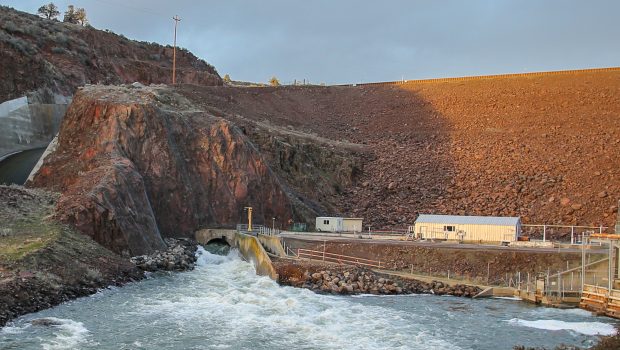Klamath Dam Removal Update | Drawdown Has Begun
A historic step towards environmental restoration is underway on the Klamath River as the removal of its last three hydropower dams begins. Authorized by the Federal Energy Regulatory Commission, this initiative signals a significant shift towards restoring the river’s natural flow and ecosystem. With the first dam already drained and others breached, the Klamath River is poised for a transformative journey towards renewal after over a century of human intervention.
Words: Evan Stafford
The next big step towards removing the remaining three hydropower dams on the Klamath River has begun. In early January 2023, the Federal Energy Regulatory Commission authorised the Klamath River Renewal Corporation (KRRC) to begin draining the three reservoirs of the Lower Klamath Hydroelectric Project and performing other specified dam removal actions at the J.C. Boyle, Copco 1, and Iron Gate dams straddling the Oregon-California state line. The fourth dam, Copco 2, was removed in summer 2023.
On January 11, KRRC began draining the lowermost reservoir, Iron Gate, by opening the dam’s low level outlet. This tunnel beneath the dam had not been opened since dam construction was completed in 1964. Dam removal activists, Tribes, agency employees, and others gathered to celebrate the monumental occassion. It is expected to take approximately two to three weeks to completely drain the reservoir, depending upon inflows and precipitation. KRRC has kept the outlet open at a flow volume of 2,000 to 3,000 cfs, which is less than its maximum output of 4,000 cfs.
Next, on January 16, a small explosive charge was used to blast open the low level outlet of the J.C. Boyle Dam, the furthest upstream Klamath hydropower dam and the only one in Oregon. This outlet was closed in 1958 when the dam was completed and had not been used since. A second outlet was blasted open on January 18 and the small reservoir was mostly drained by the end of the day.
The third and final hydropower dam, Copco 1, was breached on January 23 with an 800-pound explosive charge that opened a ten-foot diameter tunnel that was drilled into the base of the dam specifically to facilitate reservoir drawdown. The Klamath now flows unimpeded by hydropower dams for the first time since 1911. The full removal of the dams will take place later in 2024 and be completed the same year.
Expect to see a significant amount of sediment in the river during reservoir drawdown. Extensive testing has determined that the sediment is non-toxic, mostly consisting of dead algae, gravels, and fine clay particulates. Water quality is expected to improve in March, but it will likely take up to 24 months for water to return to its usual clarity, following the successful establishment of native vegetation in the former reservoir footprints. Active restoration will be ongoing for at least five years.
During drawdown, the Klamath will flow about 1,000 to 3,000 cfs higher than typical below Iron Gate Dam, and river users should be aware of changing conditions. River conditions downstream are not expected to be hazardous due to this increase in flow, which is well within the range of typical flow variability on the Klamath in the wet season. Drawdown is expected to be completed by the end of February, although spring runoff may cause the reservoirs to partially refill for a short period of time. Boaters should stay away from the river in the reaches that are being un-dammed while dam removal is in progress—go boating here in 2025 when the river is free-flowing (wooohoooooo!), not now.





